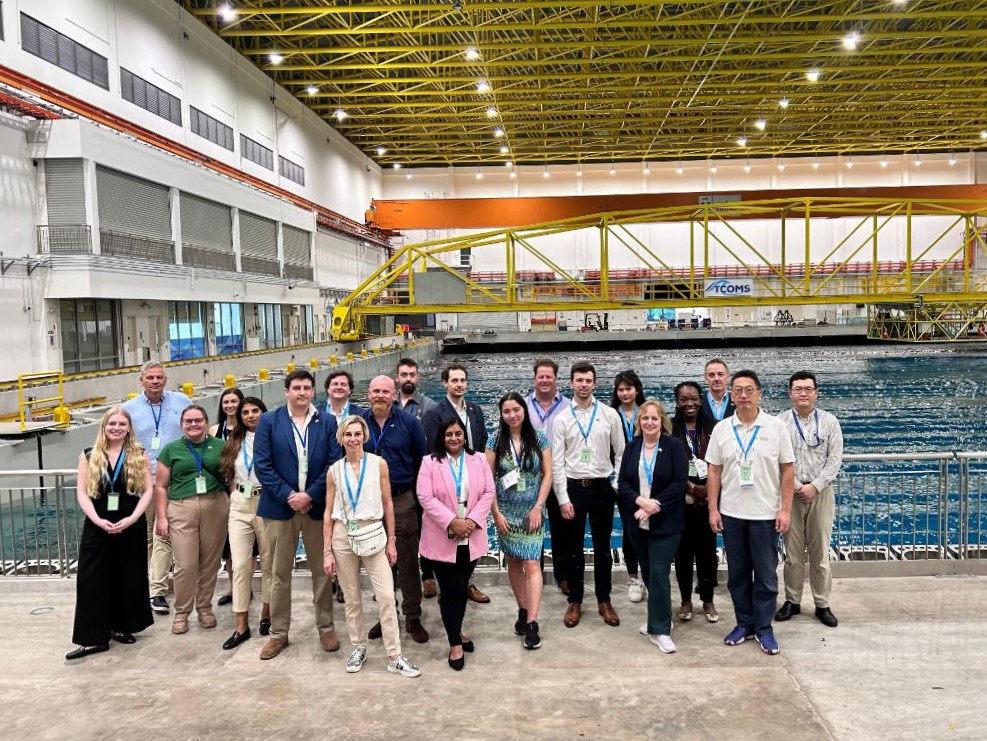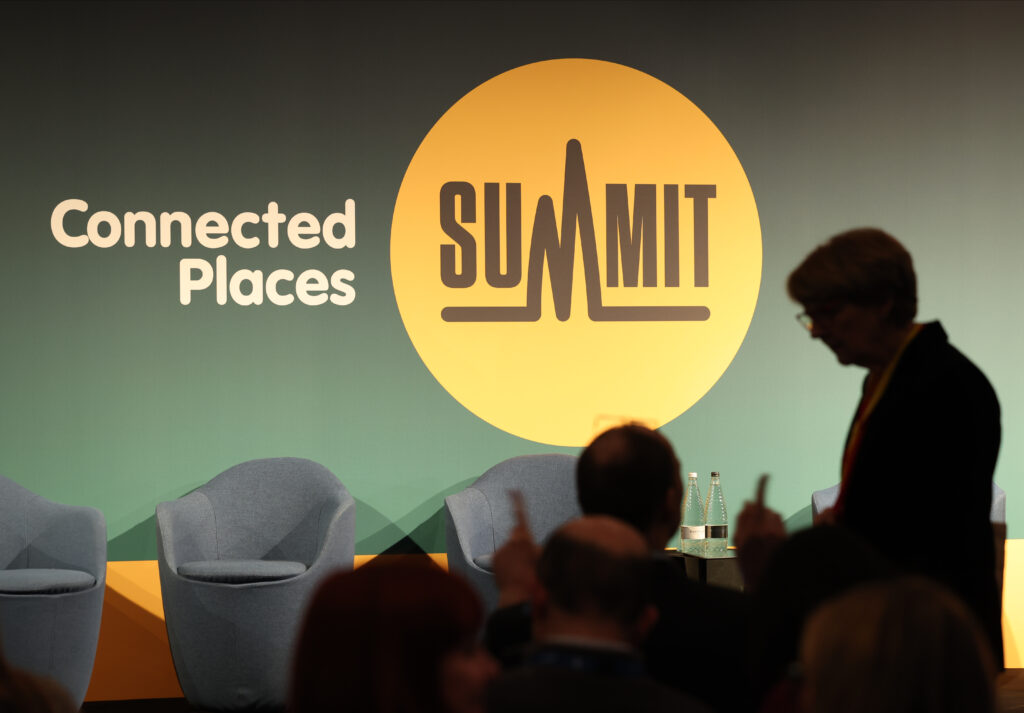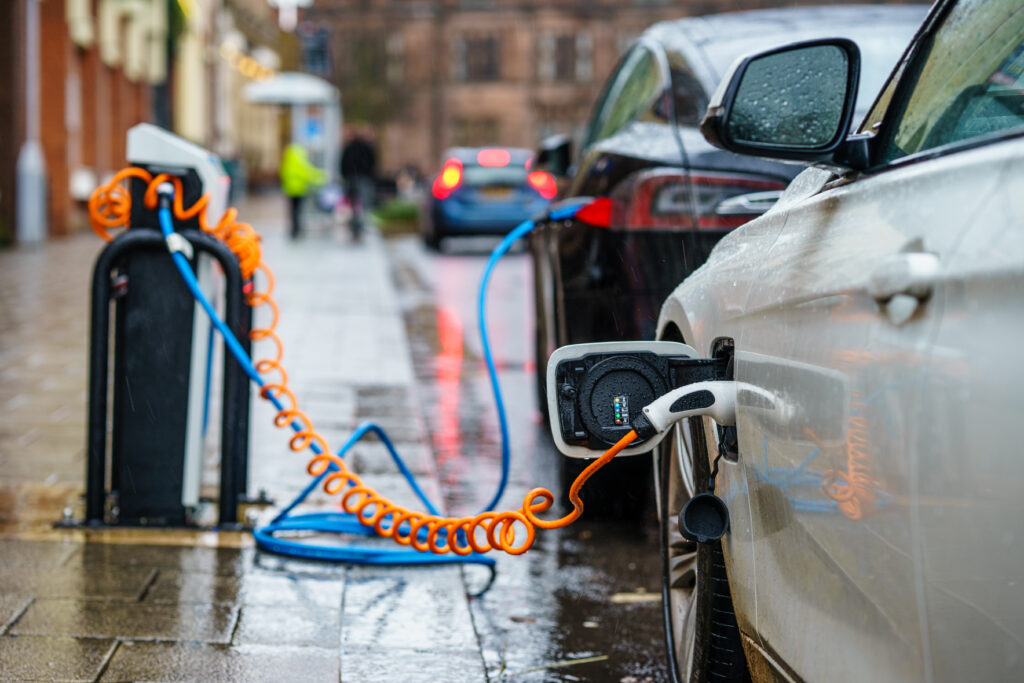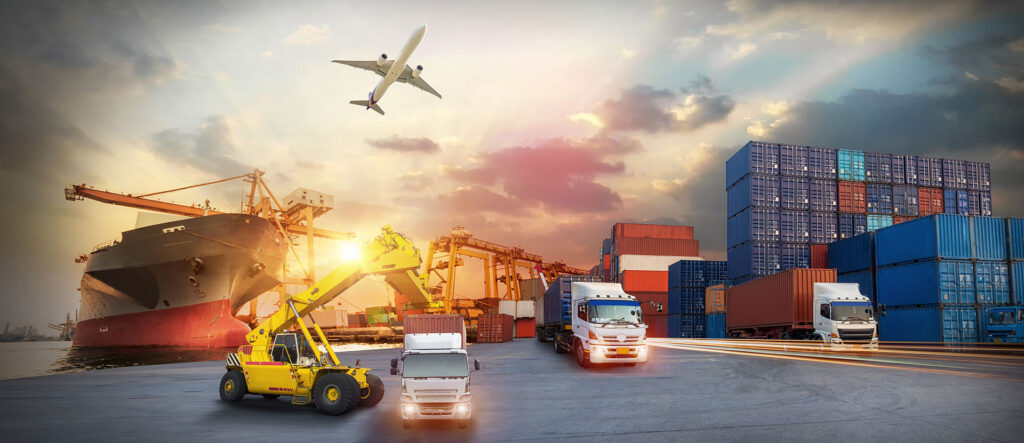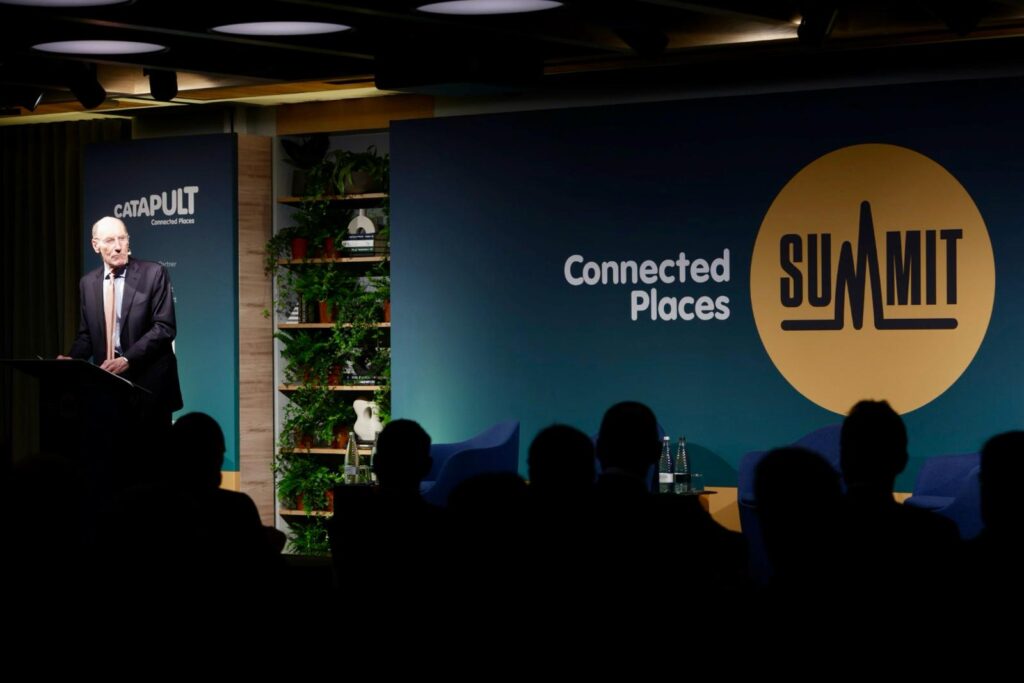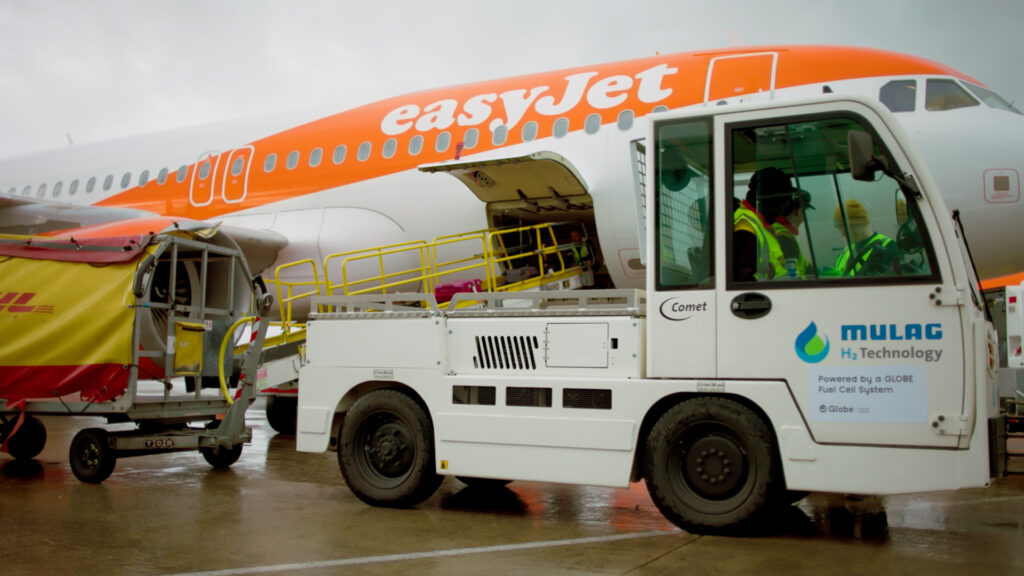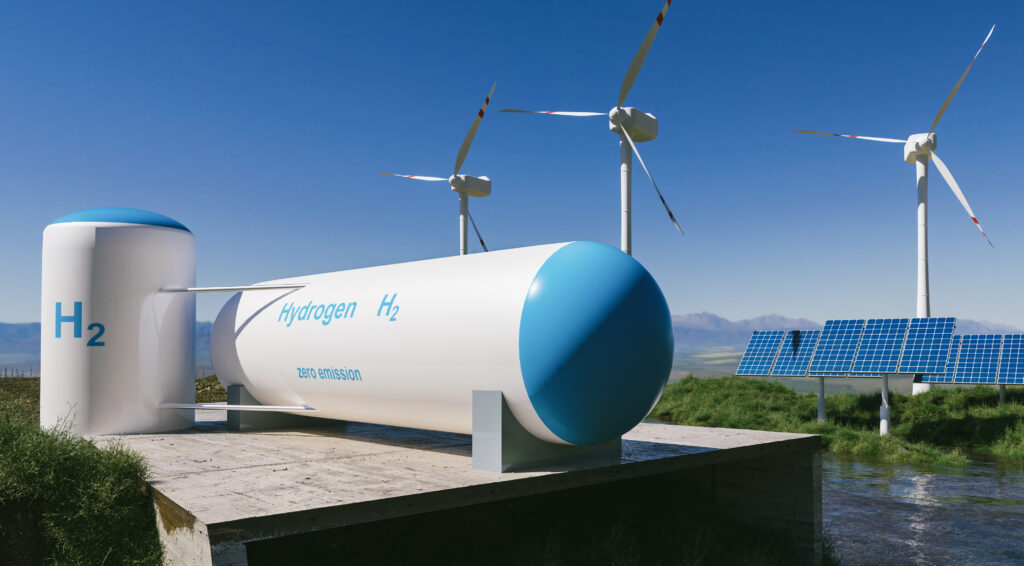Innovation Brief: Post-Pandemic Built Environment
In this chapter of the Innovation Brief on post-pandemic places, we look at how the experience of COVID-19 has affected the Built Environment.

Restarting the economy relies on solving two major challenges: providing safe, socially distant mobility options that enable people back into towns and cities, and creating environments in which they will feel safe to spend their time. Each of these presents opportunities for innovative businesses. Many firms have already risen to the occasion, as several examples from across the world highlight. The chapter on mobility explores the challenge of getting people moving again. In this chapter we look at how COVID-19 and lockdown has impacted the built environment sector – from real estate and asset management, to housing and high streets – and how innovation will enable reinvention and revival.
In this article we will focus on three main areas:
- Right now – the current situation and the emergency response within decision-making and institutions during lockdown.
- What next? – the transitional restart for decision-making and institutions in the post-lockdown, pre-vaccine period.
- Beyond recovery – a look further into the future ahead for this sector.
The onset of lockdown in towns and cities across the world led to empty shops and offices, and – in many cases – crowded homes.
Commercial landlords secured just 18.2% of rents owed for the quarter ending 24 June – a 28% decline over the three-month period. By comparison, 84% of commercial rent had been paid 60 days after the deadline for the December 2019 quarter. Retail properties were the worst-performing group, collecting just 13.8% of rent owed. In the week we are publishing this report, the retail centre giant Intu filed for administration, in part as a result of the collapse in rental income.
High Streets and shopping centres have been hit especially hard by lockdown, with non-essential retail forced to close for months, further accelerating the exodus to online retail. Profits at Primark, a clothing store with no online presence, fell from £650 million a month to zero during lockdown. Even with more shops now allowed to reopen, the need for social distancing has discouraged any swift return to normal.
At the same time, remote working has quickly become a standard practice for a sizeable workforce in the UK and globally. Whilst not universally popular, the benefits of this practice have been widely recognised – from improved productivity, to reduced road traffic and better air quality to lower office maintenance costs. In a recent survey by consultancy Eden McCallum, over 43% of surveyed European managers and executives (mostly based in the UK) said that productivity has increased while their staff work remotely. A recent survey conducted by Connected Places Catapult too showed a similar trend: most of the surveyed companies that have adopted remote working reported that the change had been positive. What’s more – as a growing body of evidence shows, this pandemic-forced trend is expected to stay.
However, the rise in remote working has also highlighted inadequacies in our built environment – most obviously that many homes are ill-equipped to accommodate home-working for one person, let alone more than one (especially if they are also hosting an ad hoc school as well).

These inadequacies present a range of immediate opportunities such as:
- Socially-distanced and hygienic co-working spaces.
- Effective remote working software to facilitate collaboration – for example tools such as miro.
- Robust, high speed internet connectivity – discussed further in the forthcoming chapter on critical infrastructure.
There are also longer-term opportunities here which we discuss in more detail under Horizon 3.
Creating safe environments for people to work, shop and play
Speaking at the CityX Connected Places Expo in 2018, Indy Johar, founder of Dark Matter Labs, challenged developers and asset owners to think about optimising the built environment for human wellbeing and productivity, rather than rental income. A similar idea was expressed at last year’s World Built Environment Forum. Participants discussed how to design, build and invest in schemes that have holistic value – in terms of environmental sustainability and the wellbeing of occupiers. This contrasts with treating the built environment as a commodity to generate income.
The advent of COVID-19 and the social distancing it has necessitated looks set to shift the built environment sector towards the future advocated for by Johar – at least in the short term. Preparing workplaces to reopen and bring back employees – in a phased manner in most cases – is now a key priority for many organisations. It is likely that the best approach would balance a mix of remote work and the adaptation of existing spaces and behaviours. This needn’t be viewed as purely mitigation against risk – it could also create improvements: for example, the average commuter spends over 200 hours each year travelling to and from work, often in environments which are bad for their physical and mental health.
Less commuting would create valuable time that could be spent with family and friends, improving health and wellbeing, and in turn their productivity at work.
However, this also reopens the debate on what it means for ‘open plan’ offices that make social distancing in offices much harder. Open offices tend to be cheaper to build, but their role in increasing productivity is often put to question. For the short term, some organisations will consider using plexiglass dividers or other kind of “cough shields” in their open plan offices. But in the longer term, open plan offices will likely see a downtrend.
Over and above changes to workplace design to mitigate the risk of contamination, business leaders will also need to rebuild trust in the health and safety aspects of their premises, a key priority referenced by Kathleen Fontana of Mitie at a RICS webinar in June 2020. As the real estate services firm JLL points out:
“Returning to work means reaching an optimal solution where the trust of people in their employer, their colleagues and their government/state is beyond expectations. The physical transformation of our environments is instrumental in reaching this state and crucial to getting back to work.”
New technologies and services will be needed in order to accommodate people’s changed attitudes towards hygiene, health and safety – representing opportunities for businesses specialising in risk-mitigating solutions. Of particular interest will be solutions related to contactless technologies, behavioural science, and cleansing and air filtration.
Contactless technologies
While use of cash was already waning in many places, COVID-19 has catalysed a further shift towards contactless payments, thanks to social distancing requirements and risk of contamination. Other forms of contactless technology – including voice control, facial recognition, and personal stylus pens to use on shared screens and devices – look set to enjoy a similar boost as workers begin to return to offices and other workplaces.
Pre-COVID, voice control technology was increasingly common in the home, thanks to devices like Google’s home hub and Amazon’s Echo. In the workplace, touch-free technology was limited to sensor-operated automatic doors, toilet flushes and hands-free soap dispensers. Now, as an increasing number of organisations re-assess their hygiene measures, that is expected to change.
Hands-free technology that enables employees to avoid contact with frequently ‘touched’ surfaces such as lift buttons, light switches, taps and meeting room booking screens may see more widespread adoption, especially in new builds. Simpler door-opening devices have already found their way to market – including the “hygienehook”, created by London-based designer Steve Brooks. Within a week of his design, four different models of the hook went on sale selling at just under £15 ($18.60) each. UK companies like ultraleap who provide underlying haptic technology are likely to see opportunities to bring more sophisticated applications to market.
In the near term, apps that allow smartphones to be used for entry into buildings and activate lifts will see higher adoption. For instance the Navigator Office Center in Estonian capital Tallinn recently made its building entry systems contactless with smartphone technology allowing tenants to open doors and activate lifts.
Facial recognition, although controversial, is seeing widespread adoption in commercial and residential buildings globally. The access gates to the 22 Bishopsgate building in London uses facial recognition. There are challenges here – standard facial recognition technology struggles when people wear masks – but a Japanese deep-learning powered system has overcome that, ensuring workers do not have to remove masks to be identified upon entering an office or building.
In the longer-term, a larger number of organisations could follow suit or explore other contactless biometric scanners such as palm or vein recognition.
As the real estate services firm JLL points out, the cost and public acceptance of these tech solutions will remain barriers to adoption irrespective of the tools being used. But with COVID-19 driving new behaviours, public perceptions and priorities may shift in favour of these tech solutions. For now, relatively cheaper and easier to implement smartphone or token access solutions offer immediate opportunities.
Although contactless cards and keys are already widely used for secure access to buildings, the need to carry them with oneself all the time render them ‘inconvenient’ as compared to more recent access technologies including facial recognition and smartphones.
Cleansing, ventilation and central air filtration
Smart building technologies are increasingly common – Connected Places Catapult has a whole testbed for them at its London offices. Innovative sensors and systems already track air quality, room utilisation, and the flow of people around a building. Such technology is likely to come into its own as we reopen offices and other shared spaces. Sensing, building information tools and management platforms which can track and help manage cleansing regimes will provide assurance to facilities managers and users alike that Covid-secure hygiene is being maintained.
The effective functioning of ventilation and air filtration is of particular importance. Research by the World Health Organisation has shown that the average European spends up to 90% of their time indoors—in the office, in the car, at school or in the home. Of these environments, only offices usually have any kind of air filtration system in place. Even before the pandemic, air quality experts like Prof Frank Kelly of King’s College London expressed concerns about the health impacts of poor indoor air quality.
As workplaces plan to bring back staff, they will want to demonstrate that they have implemented the highest possible quality of air filtration and cleansing to reduce or eliminate both pre-existing pollution and any airborne COVID-19 droplets. This is therefore an opportunity for providers of heating, ventilation and air conditioning (HVAC) systems and innovators who can help improve the effectiveness of such systems – for example by using ultraviolet germicidal irradiation (UVGI) to help deactivate the virus.
All of these technical retro-fit interventions can be complex – for example, adjusting air-conditioning systems to improve filtration is not a simple task. In addition, multiple interventions run the risk of elongating disruption. There is an opportunity therefore for creating a standardised ‘retrofit kit’ which brings together the key elements which can be deployed in a single ‘hit’.
Behavioural science to rebuild trust in physical spaces outside homes
Globally, trust levels in institutions and systems were plunging even pre-COVID. But the onset of COVID has exacerbated this, particularly as doubts over governments’ data and efforts to contain the pandemic continue to soar.
After months of lockdown restrictions discouraging people from leaving the relative safety of their homes, bringing people back to offices, shops and high streets will require more than simply implementing risk mitigations. It will also require tackling perceptions and building trust among people that the mitigations are effective, and it is safe to return.

Aside from implementing highly visible and effective mitigations, there will therefore be significant need for neuroscience, psychology and behavioural science-based interventions that will help people (especially those on borderline) easily understand and ‘trust’ those mitigations.
Such interventions could include:
- Publishing user-defined signifiers of good hygiene, drawing on data from Building Information Management platforms on, for example, the performance of air conditioning and filtration
- Using infrared sensors to regularly check body temperature and communicating openly about any infection risks with employees can also help build and restore trust. Some organisations and facilities in China, Japan, and South Korea are already following this approach.
- Using visual cues such as feature carpet tiles to suggest the appropriate distance between employees and pathways, or one-way systems.
- Using biophilic design that enhances people’s connections with the natural environment by rendering the buildings more natural features. Such a design offers the potential to make physical spaces more pleasant and productive to work in. As this report by Terrapin Bright Green highlights, there is growing evidence that such a design can create measurable, positive impacts of individuals’ health and wellbeing.
While such interventions would help build trust along the physical dimension, leaders will also need to evaluate and rebuild trust across the other three dimensions of trust: emotional, financial, and digital.
Adaptive, Modular Buildings to Gain Traction
It is likely that even after the current pandemic passes, people will remain extremely hygiene and health conscious. With reports of new viruses with pandemic potential already being detected, it is imperative that we ensure our built environment is adapted in such a way to minimise future risks and equips places with the agility to respond to future crises.
As such, especially for office and retail, flexible use buildings that allow property developers and managers to manage the risks of variable demand which might arise from regular lockdowns or the need for distancing are likely to see increased adoption.
In addition, the pandemic created an urgent need for new emergency facilities such as hospitals, quarantine centres, ventilation systems and temporary lodgings. Modular, modern methods of construction were able to deliver what was needed rapidly:
- The 1600-bed Leishenshan Hospital in Wuhan was constructed from prefabricated modules in two weeks, compared to the usual development time of over two years.
- The US company Jupe developed modular mobile spaces including the “world’s first standalone intensive care unit,” an affordable, modular structure that can be flat-packed and deployed via trucks or cargo ships.
- A UK team of engineers, manufacturers and clinicians have developed a low-cost, modular field ventilator that can be used to treat coronavirus patients in poor and remote parts of the world.
This large scale ‘proof of concept’ may help collapse some of the existing barriers to industry adoption – as well as provide another reason for government to support the development of the sector. The ‘design once, build many times’ approach is also well suited to incorporating improved building ventilation and sanitation measures to help reduce the impact of future infections.
Taking cues from its response to the pandemic and building modular healthcare facilities, the public sector could follow Homes England in leading the way by commissioning more modular construction in the near future. This should increase the number of manufacturers in market and thereby substantially address any concerns over quality and durability of modular construction.
A rebalanced work / life
Approaches to creating new ways of living and working are clearly being revised considering the experience of lockdown. As noted above, home working is anticipated to continue for the foreseeable future and large corporations are already preparing for this.
This suggests some additional demand will arise for adaptions which make our living environments more pleasant – and for which there are already increasing calls as part of a movement to ‘build back better’ after the pandemic.
In addition, the energy efficiency of homes has a pivotal role to play in carbon and fuel savings, as well as our health and wellbeing. Our homes currently consume about 30% of the UK’s energy and produce 20% of greenhouse gas emissions. 80% of that energy is used for space and hot water heating, mostly using gas. As well as emitting carbon dioxide, burning gas produces nitrogen oxides that are a major contributor to poor air quality in urban areas.
Before the pandemic, the UK has struggled to get a deep retrofit programme off the ground, partly due to consumer inertia as well as systemic barriers (discussed in our report here). As people spend more of their time at home and appreciate the benefits of these approaches, increased demand paired with government stimulated provision will finally unlock this puzzle.
Working together to accelerate innovation in the built environment
Before COVID-19, Connected Places Catapult was working with partners across the UK and around the world to develop ‘art-of-the-possible’ projects, designing and deploying innovations to address the challenges faced by places. We have worked with over 100 businesses helping innovators navigate the complexity of the connected places market and we are creating new commercial opportunities for firms, improving productivity, and providing socio-economic and environmental benefits.
If you are working on an innovation that might contribute to the built environment ecosystem, and would like to see it feature in future reports, please tell us about it. If you think we can help you with your innovation, or if you are looking for an innovation provider, then please get in touch. Together we can create connected places that are fit for the future.



